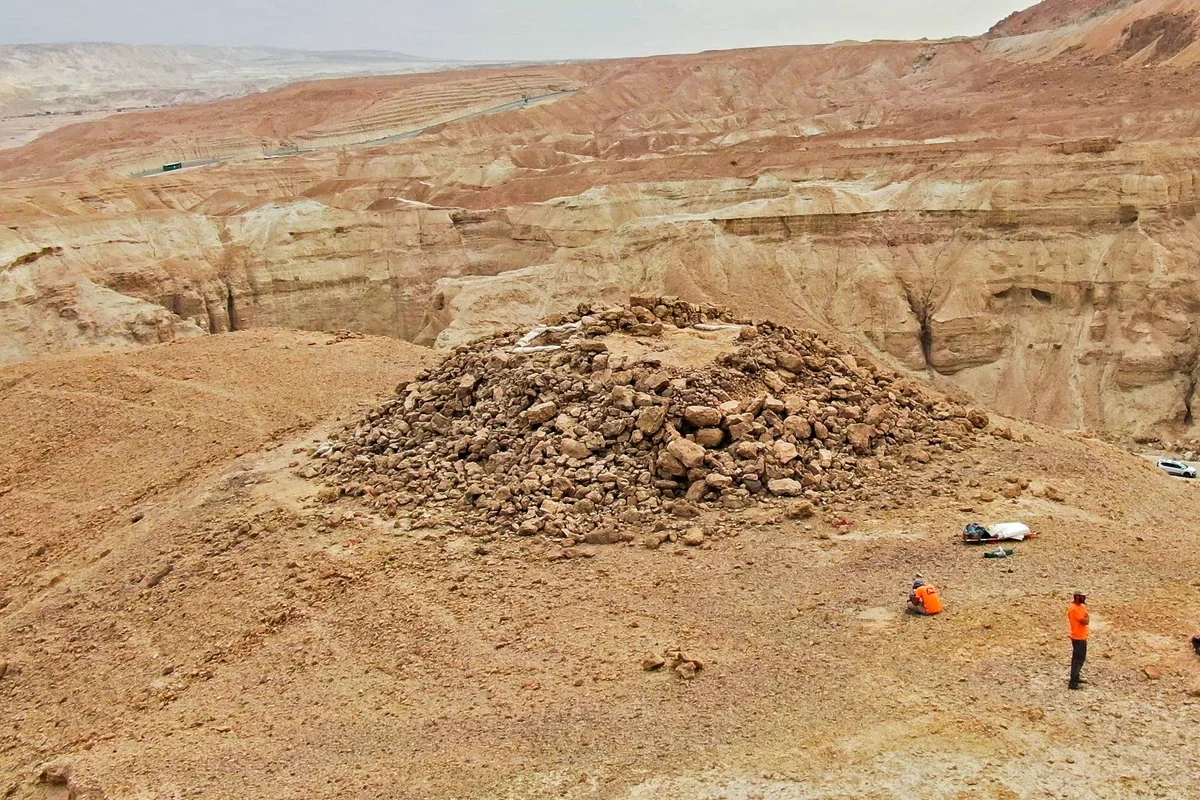Archaeologists from the Israel Antiquities Authority (IAA) have discovered a pyramidal structure north of Nahal Zohar in the Judean Desert.
According to a press statement from the Israel Antiquities Authority (IAA), the mysterious structure dates to the Hellenistic period, around 2,200 years ago.
Archaeologists have uncovered a wealth of artefacts at the site, including papyri written in Greek, bronze coins from the reigns of the Ptolemies and Antiochus IV, weapons, wooden tools, and textiles—many of which remain remarkably well-preserved due to the desert’s arid climate.
“This is one of the richest and most fascinating excavations ever conducted in the Judean Desert,” say excavation directors Matan Toledano, Dr. Eitan Klein, and Amir Ganor of the IAA.

“The structure is enormous, built from hand-carved stones weighing hundreds of kilograms each. And already in the first week, volunteers unearthed historical documents, bronze vessels, and ancient furnishings. Every day brings new surprises,” added the archaeologists.
An initial interpretation of the structure suggests that it may have been a guard tower for guarding trade routes when the Ptolemies and Seleucids ruled the region, or possibly a monumental grave – or something else entirely?
The excavation is part of a broader rescue initiative launched eight years ago to protect endangered archaeological treasures from looters.
Backed by the Ministry of Heritage, the Civil Administration’s Archaeology Department, and the Israel Antiquities Authority, the project has surveyed 180 kilometres of cliffside and identified over 900 caves.
Header Image Credit : Israel Antiquities Authority
Sources : IAA





